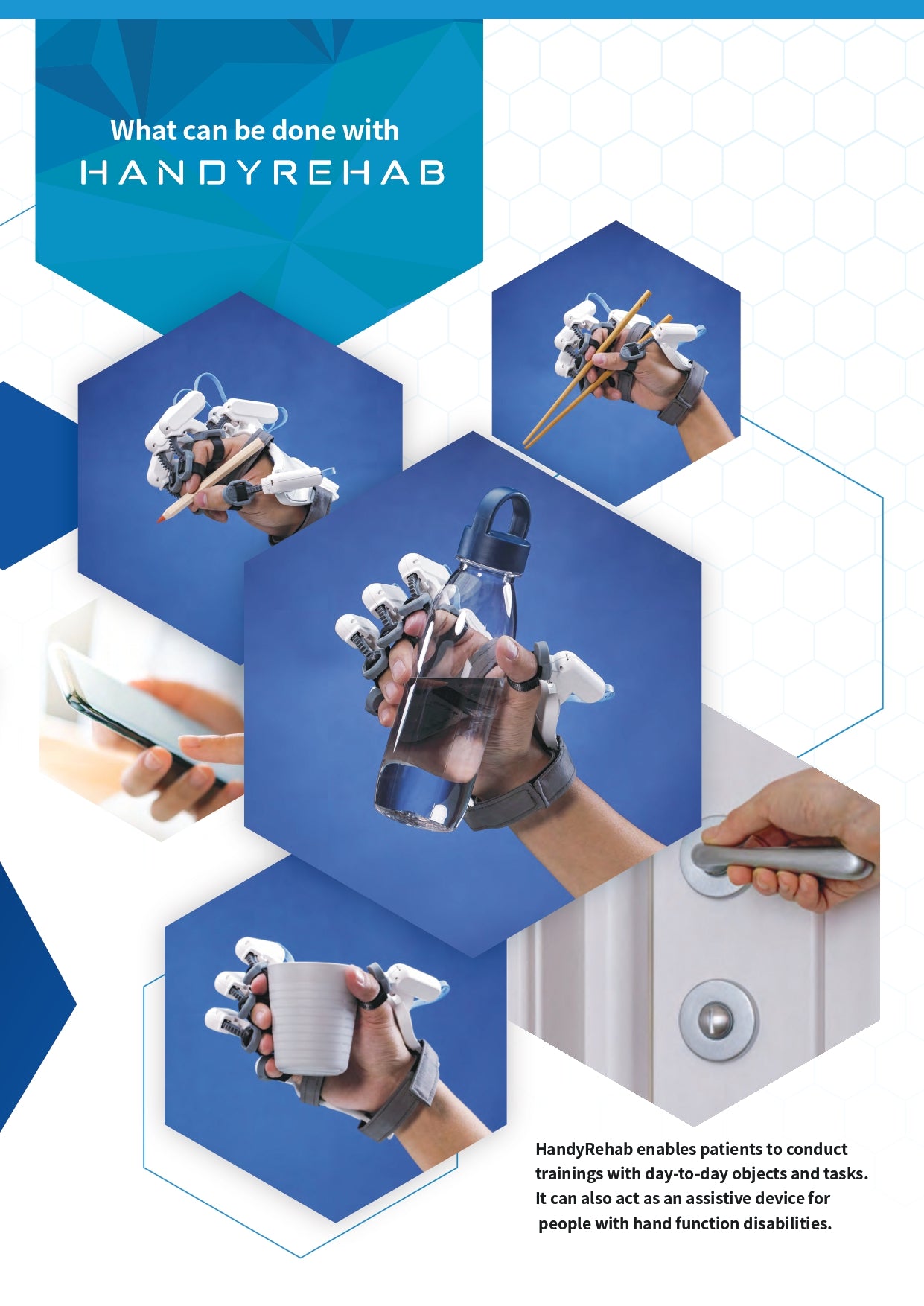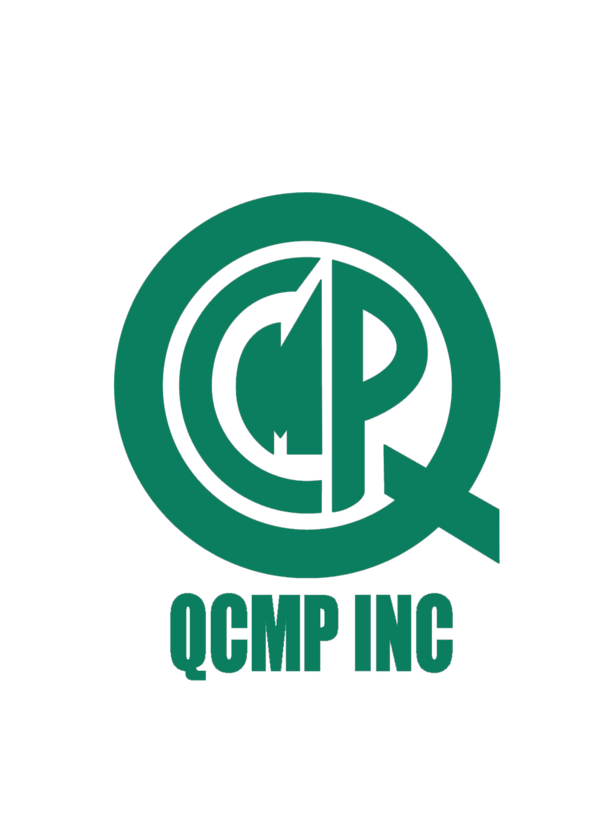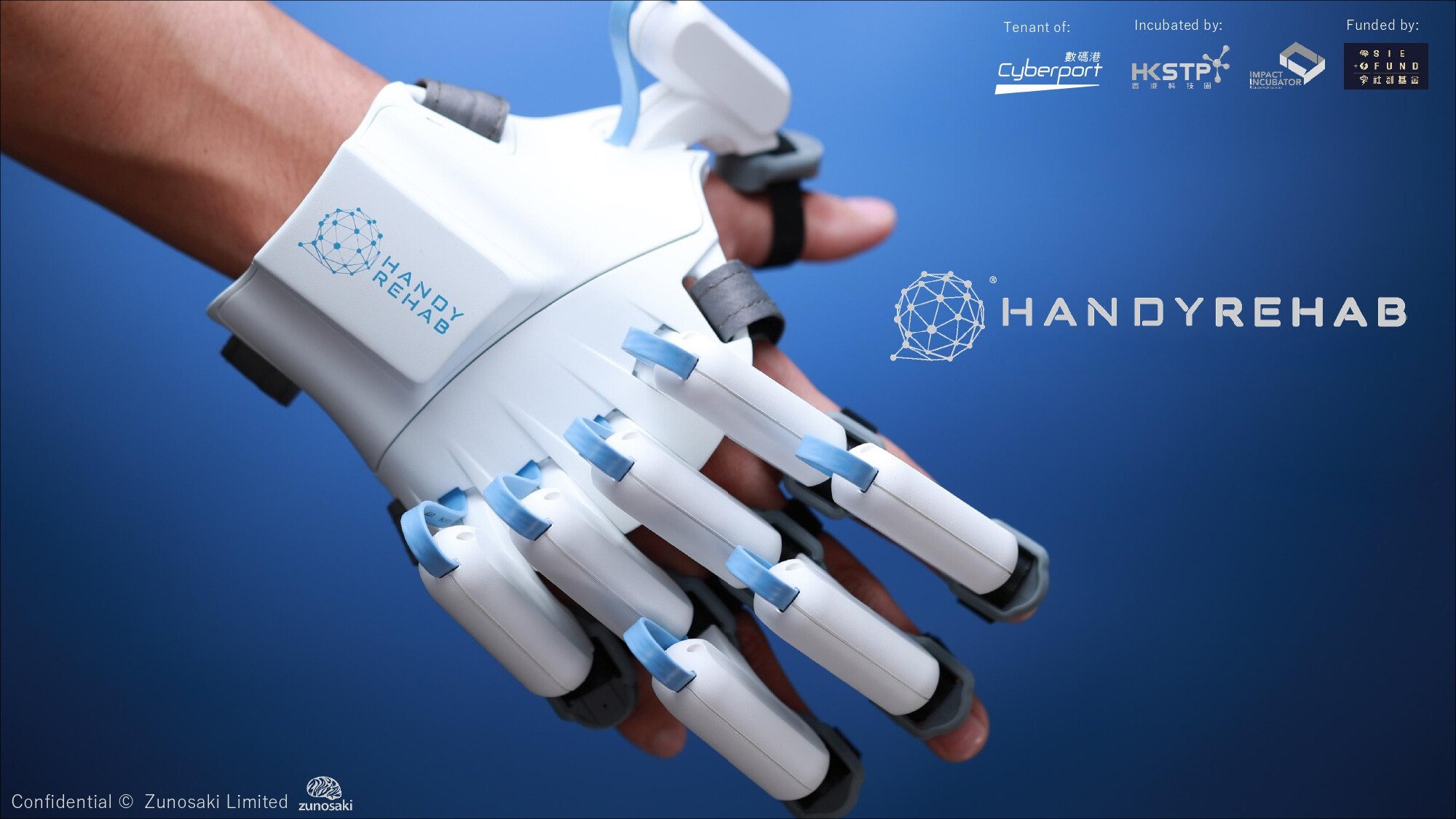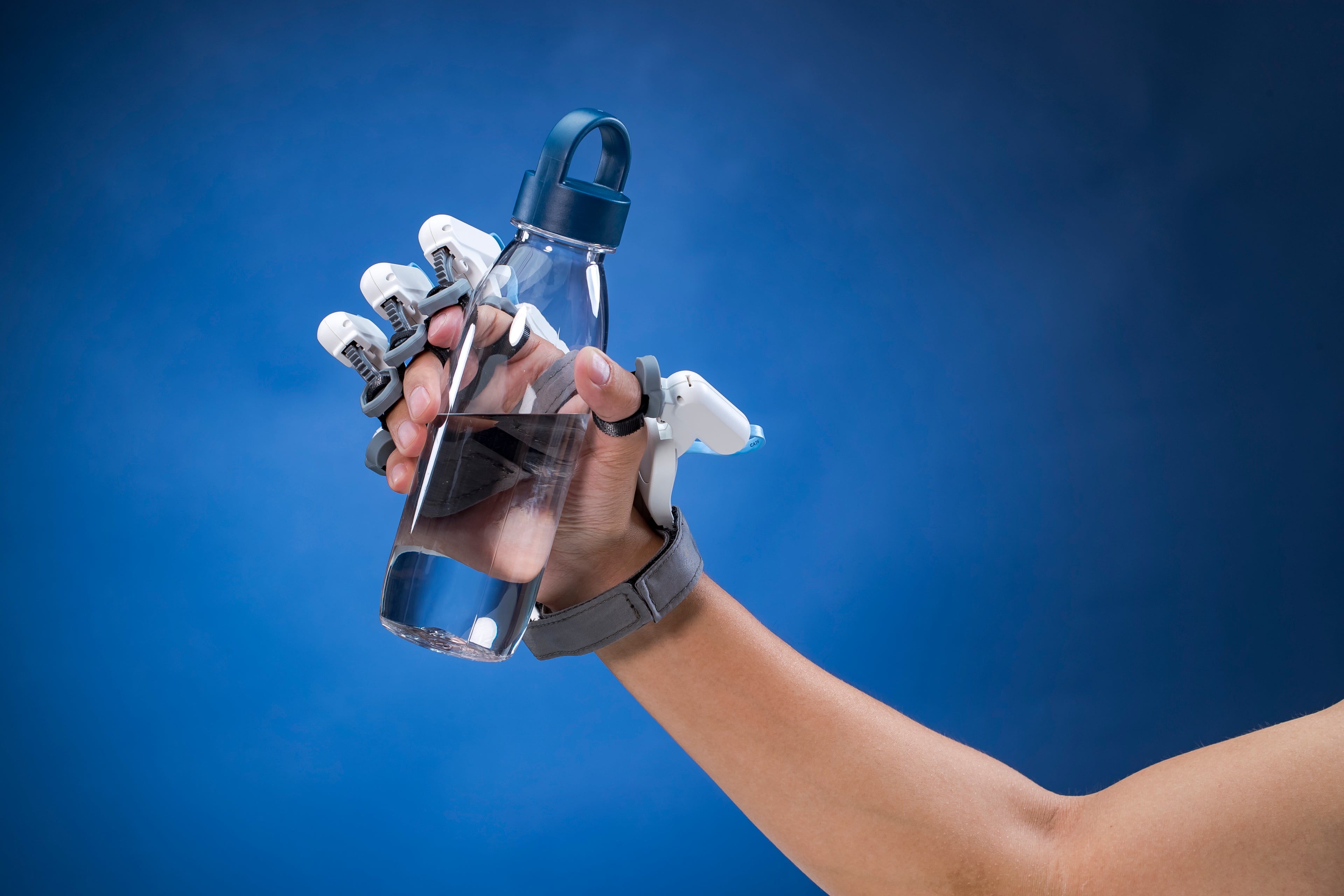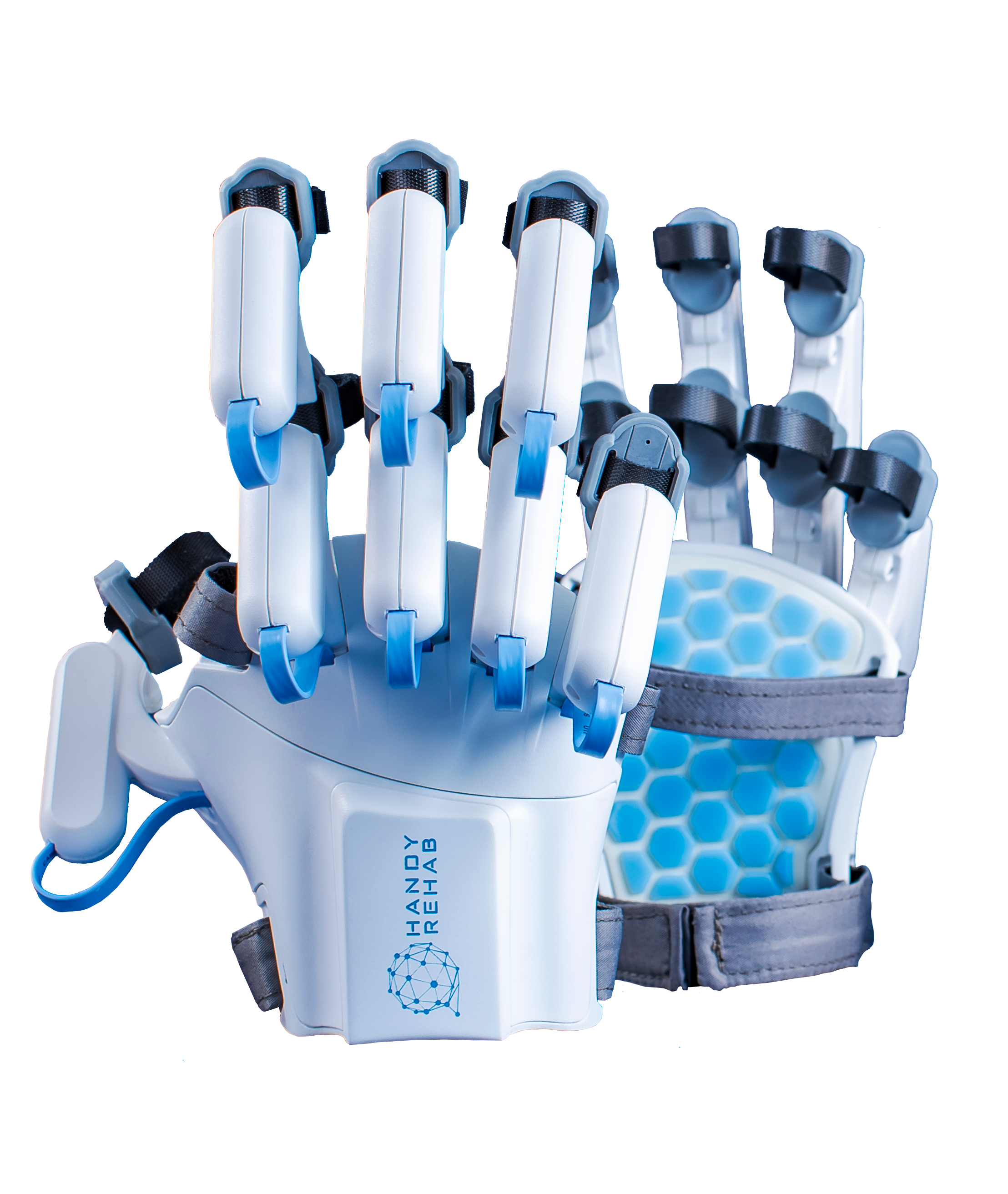Benefits
-
Allows Active Assistive Movements
Active trainings are enabled through electromyography (EMG). Our robotic gloves can assist movements upon detecting the patient's intention to move. Many therapists find this highly encouraging for patients.
-
Automatised training programmes
Automatic procedures can be designed for individual patients, which would require less labour for ongoing training.
-
Task-based training
HandyRehab helps patients improve the skills needed for daily living and working. The lightweight and wireless design allow patients to undertake task-oriented training with real life objects.
-
Task-based training
Equipped with motion-tracking and key performance measuring features, HandyRehab allows therapists to better track patients' recovery progress.
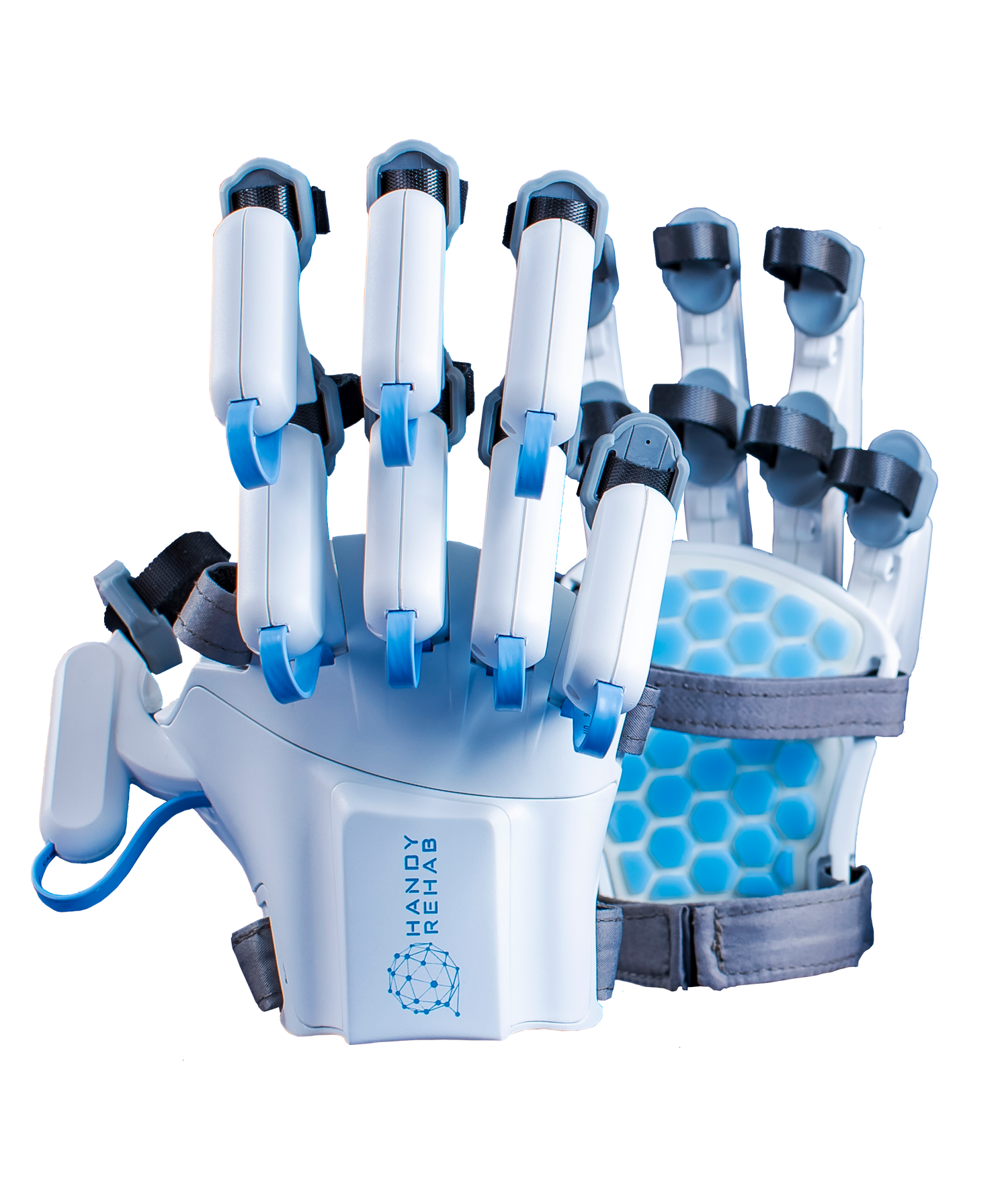
WHO is HandyRehab for?
Designed for patients recovering from stroke, TBI, or spinal cord injury, offering targeted rehabilitation to improve hand mobility, strength, and coordination, empowering independence in daily activities. Ideal for enhancing motor function with accessible, tailored therapy.
